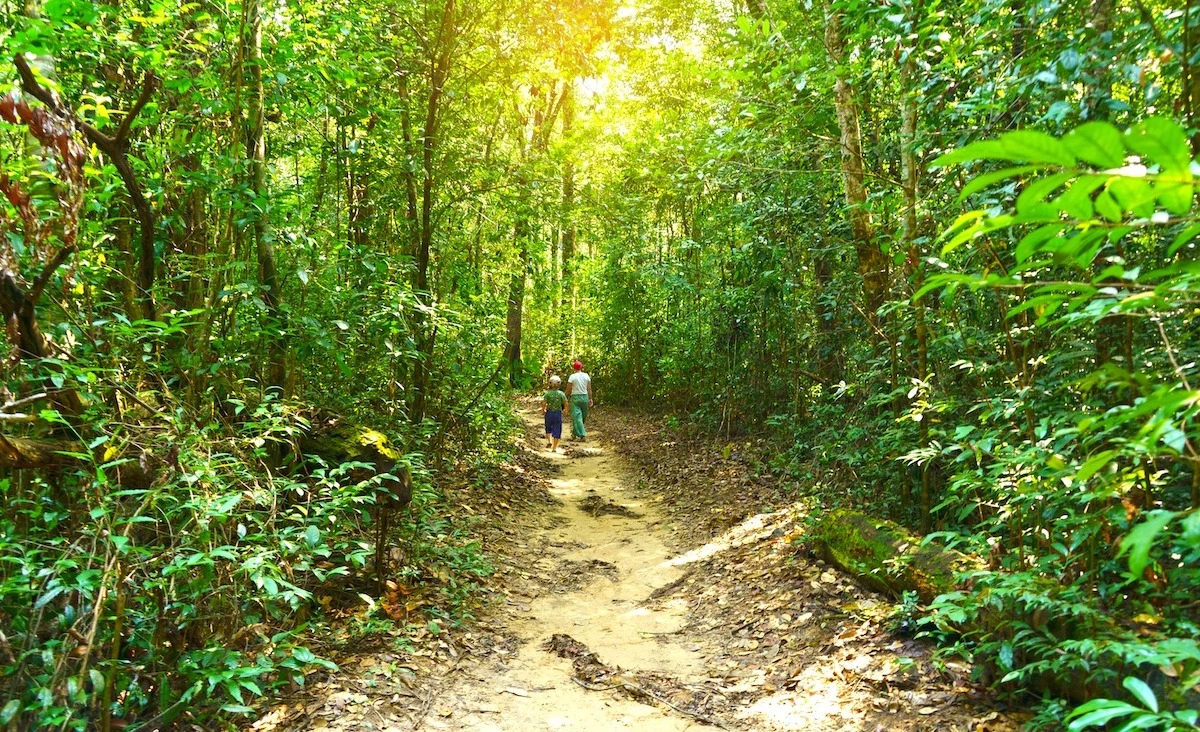Phu Quoc National Park has a total area of 31,422 hectares, located in 6 communes: Cua Duong, Cua Can, Ganh Dau, Bai Thom, Ham Ninh and part of Duong To commune. The garden has three forest ecosystems: evergreen broadleaf forest, melaleuca forest and coastal mangrove forest. There are currently about 1,400 species of plants and nearly 500 species of animals, according to the Phu Quoc National Park website.
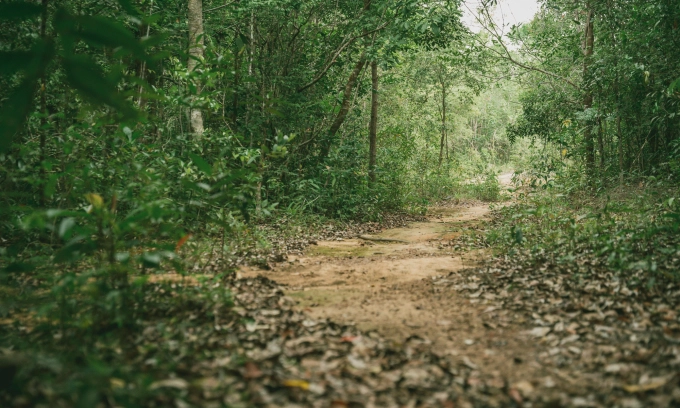
Nguyen Anh Tien, a tour guide in Phu Quoc, said that trekking through the forest in Phu Quoc National Park is a new experience that has appeared in the past two years, not known to many tourists. Each month, he receives about 5-7 tours, each tour ranges from 2-12 guests.
Le Minh Tan (29 years old, Ho Chi Minh City) on May 23 performed a trekk bow of about 9 km, the way and the way back were different with three rest points. "The trekk bow is relatively easy to walk, not too steep, suitable for newcomers," Mr. Tan said after taking about three hours to travel and about an hour and a half to return.
Because it does not take too much physical strength, he has time to focus on observing, experiencing picking and eating forest fruits such as sim, fruit and leaves (mangosteen family), gourd, and mushrooms. Depending on the season, there will be different types of forest fruits and leaves.
In addition to mosses, soft-stemmed trees, fruit trees, ancient trees, and edible trees, the guide also introduces rare plants, which are in the Red Book, or strange plants that are first heard of the name. Some plants that are medicinal herbs and precious herbs can be found on the trekk road such as reishi mushrooms, rhizome mushrooms, ant nest trees (male squash).
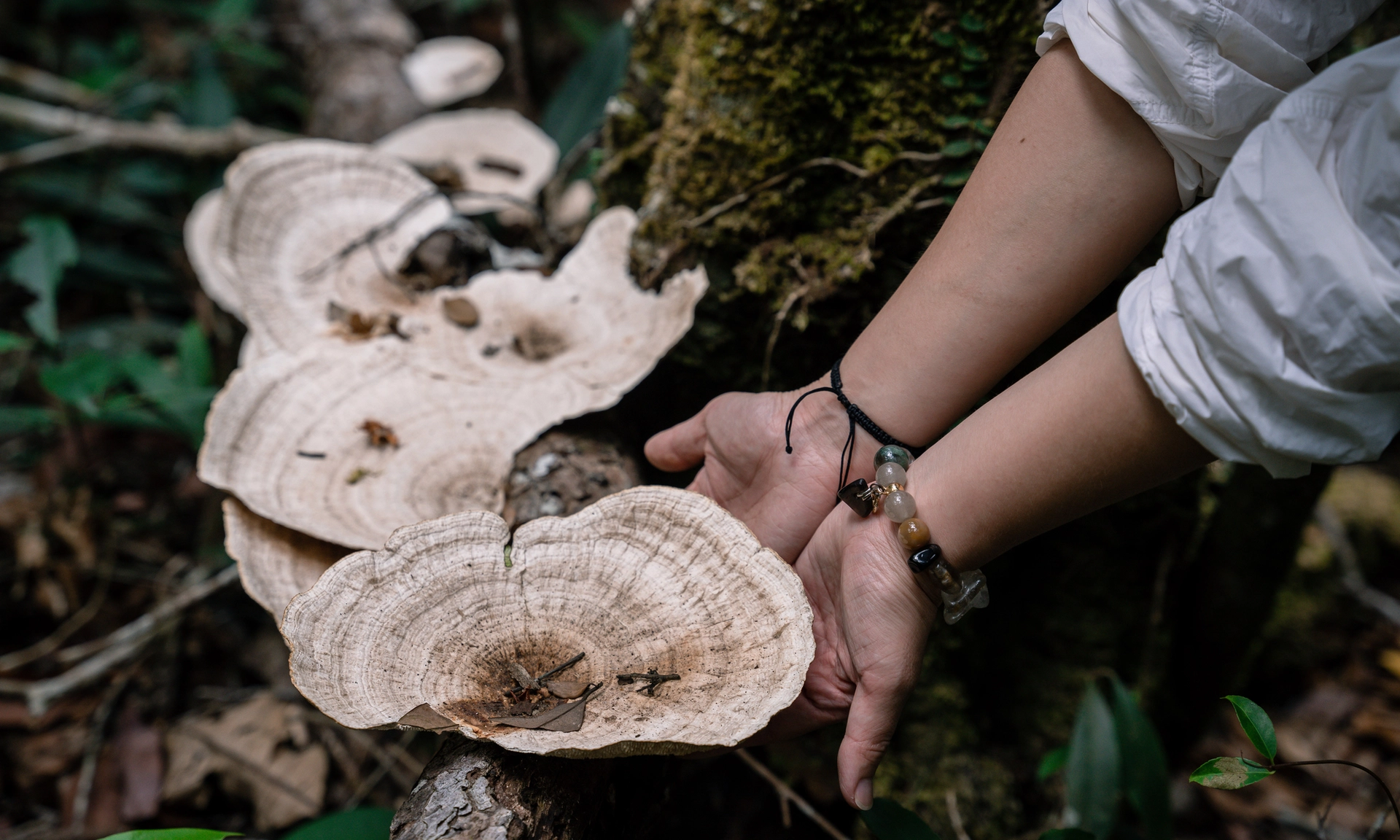
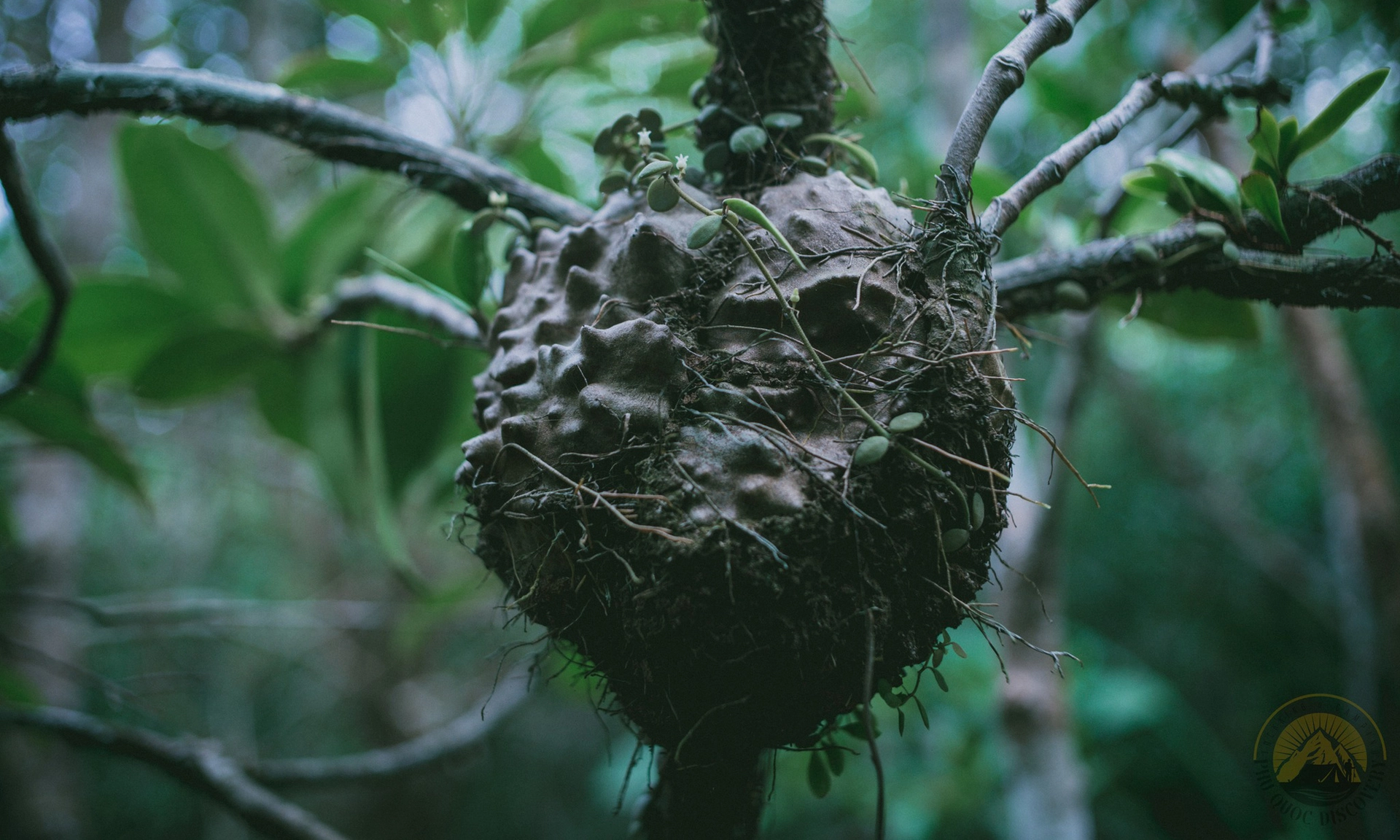
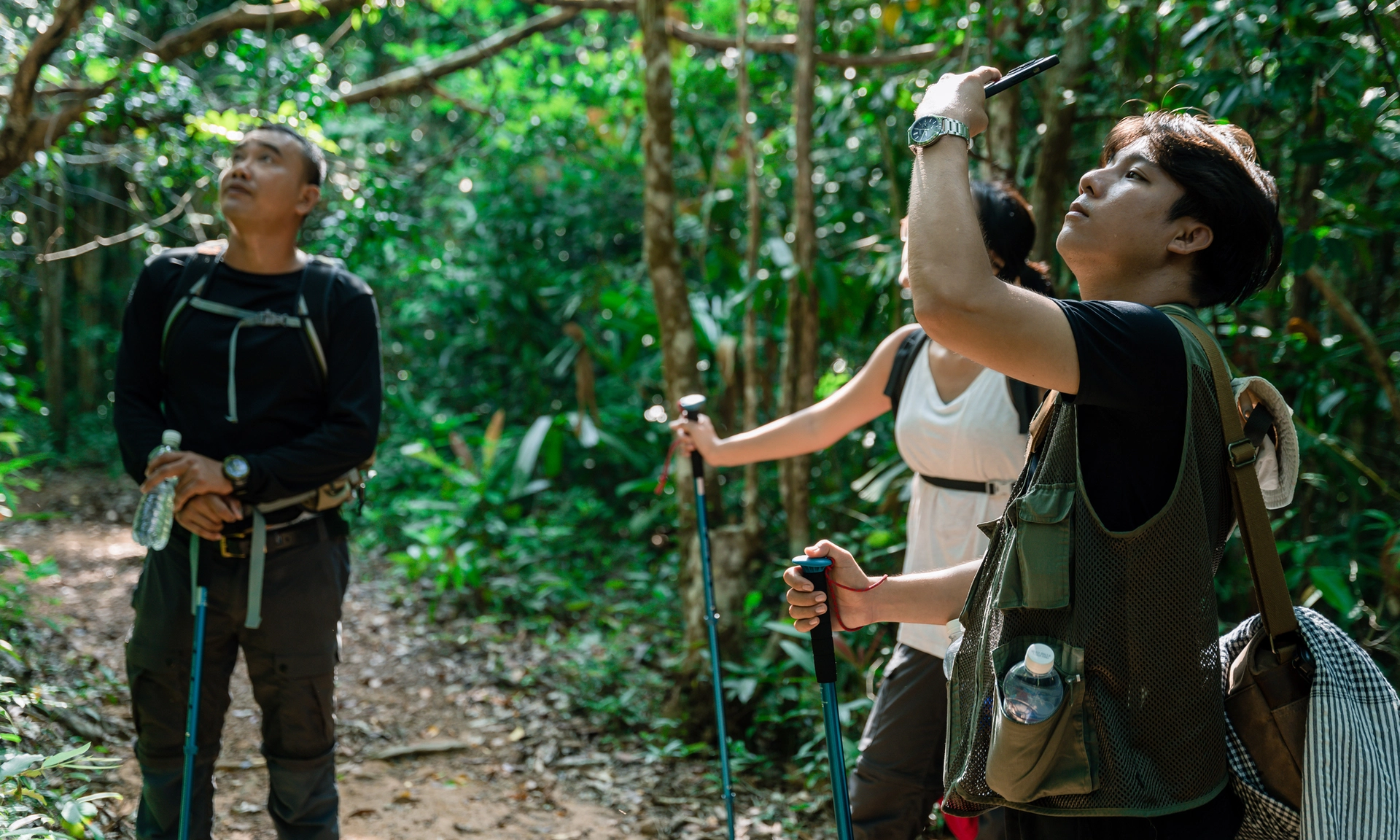
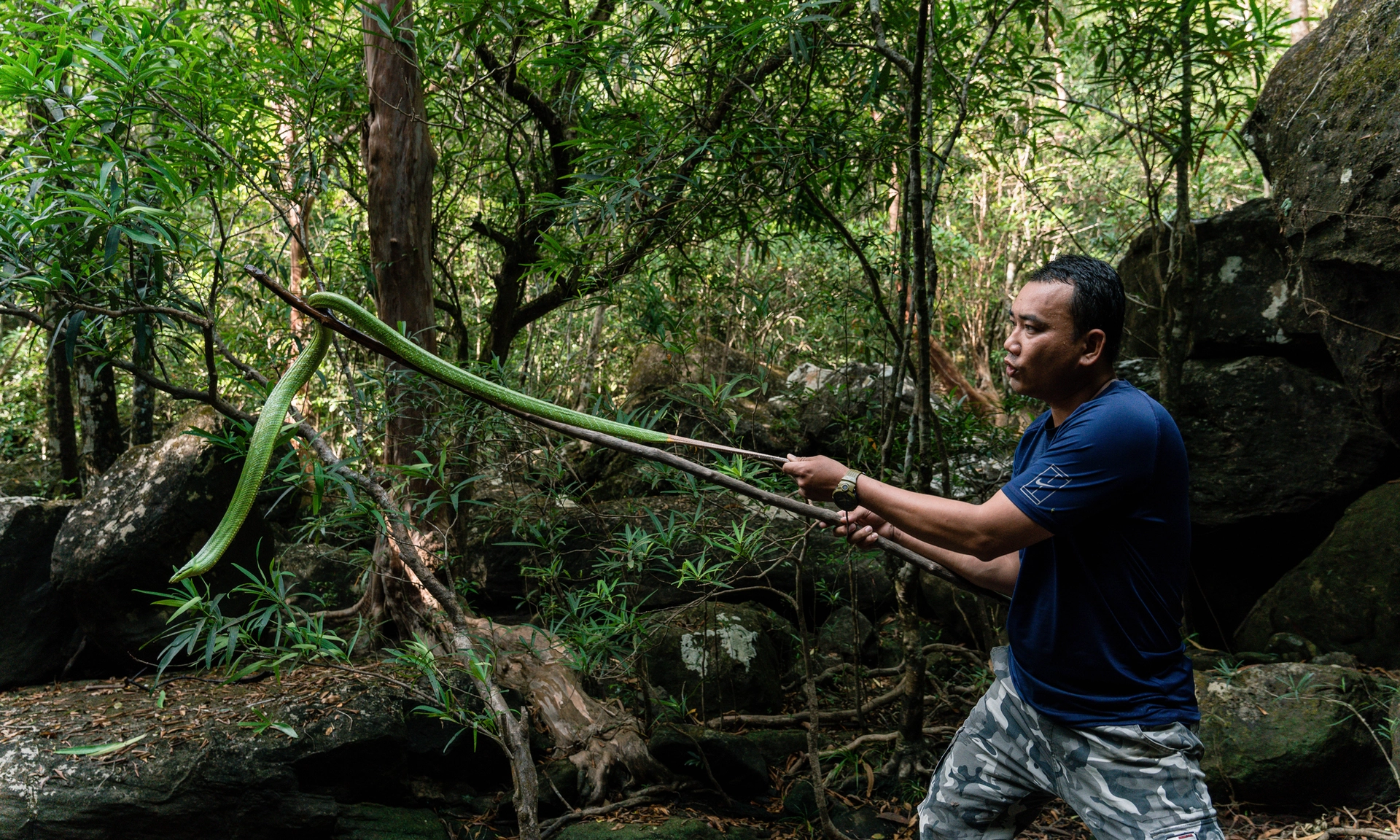
If you are lucky, visitors can also encounter wild animals such as monkeys, weasels, shrimp rods, and hoes (salamander family). Some insects and reptiles are easier to encounter such as snakes, centipedes, and lizards.
Mr. Tien said that one of the situations that easily makes many people panic when trekking in the forest is meeting snakes. In this case, visitors need to be calm, do not chase away on their own, avoid causing snakes to be injured or attacked. Experienced guides will take the initiative to handle the situation.
The end point of the trekk bow is the Thu Tu waterfall about 5 m high. Around the waterfall are arched rocks to help shield from rain and sun, and at the same time can be used as a place to cook and take a lunch break. Near the waterfall, there is a sinkhole for visitors to take photos to check in.
The water from the waterfall flows into a relatively wide lake just below, the water is clear and cool. Visitors can go swimming, catch fish, or take pictures. There are also many large flat rocks for camping, watching the moon and stars at night.
"When trekking, it rained, I thought I was unlucky. But when I came to the waterfall, the water rose, making the waterfall more impressive," Mr. Tan said.
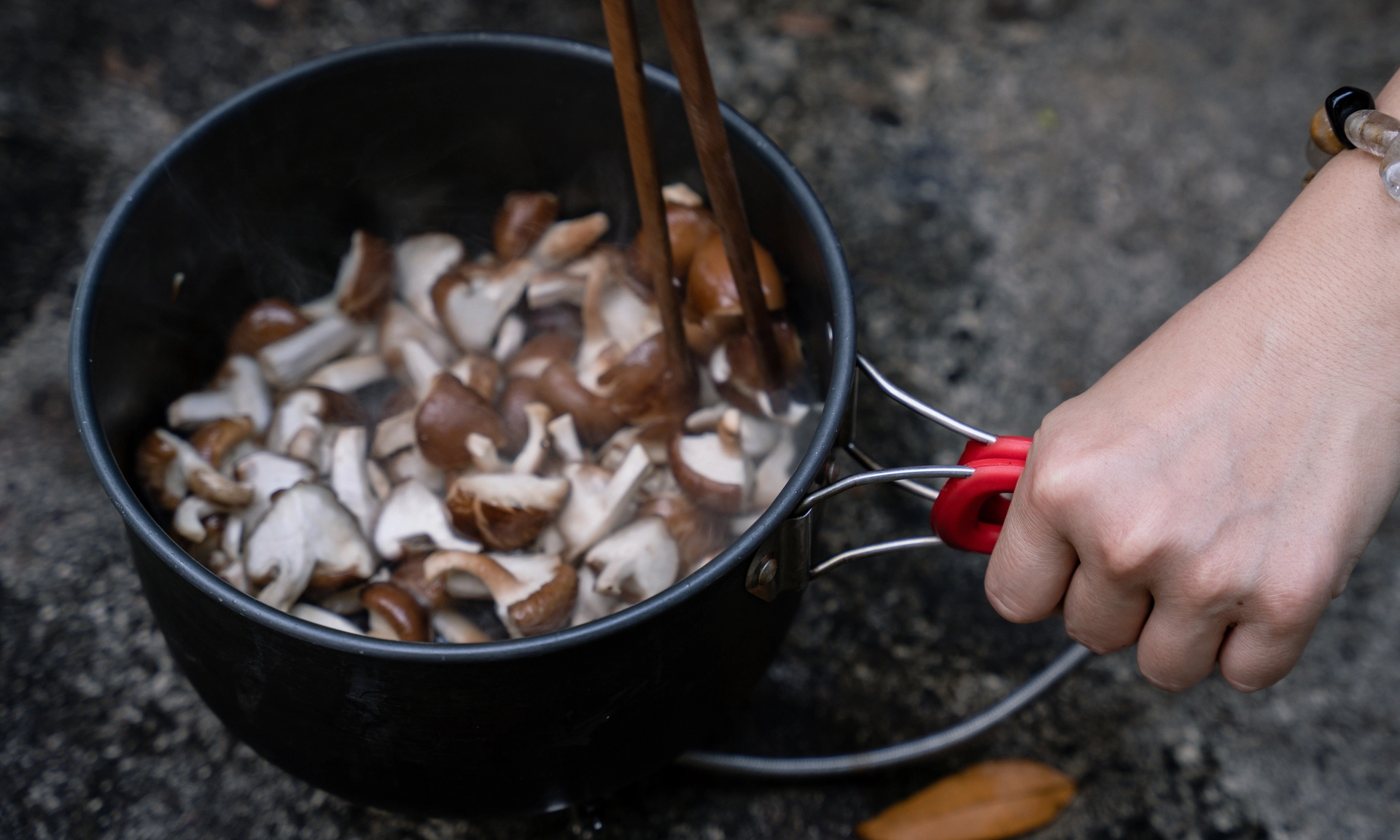

According to Mr. Tien, the most beautiful season for trekking this bow is the dry season, from September to February after there is little rain, but the waterfalls and streams are still full of water and lush trees. It is currently the rainy season in Phu Quoc, but because the terrain is not too complicated, visitors can still experience trekking, only limiting going at the time of storms and heavy rain.
Mr. Tien suggested that visitors should bring topical medicines, insect sprays, long-sleeved clothing, hats, eyeglasses and sunscreen, swimsuits, sneakers and waterproof bags for phones.
The food is prepared in advance by the guides. On the trekk road, visitors can pick some mushrooms and wild vegetables to eat with barbecue at the property. The park has strict regulations on the use of fire and hunting, gathering, visitors need to follow the instructions of the guide.
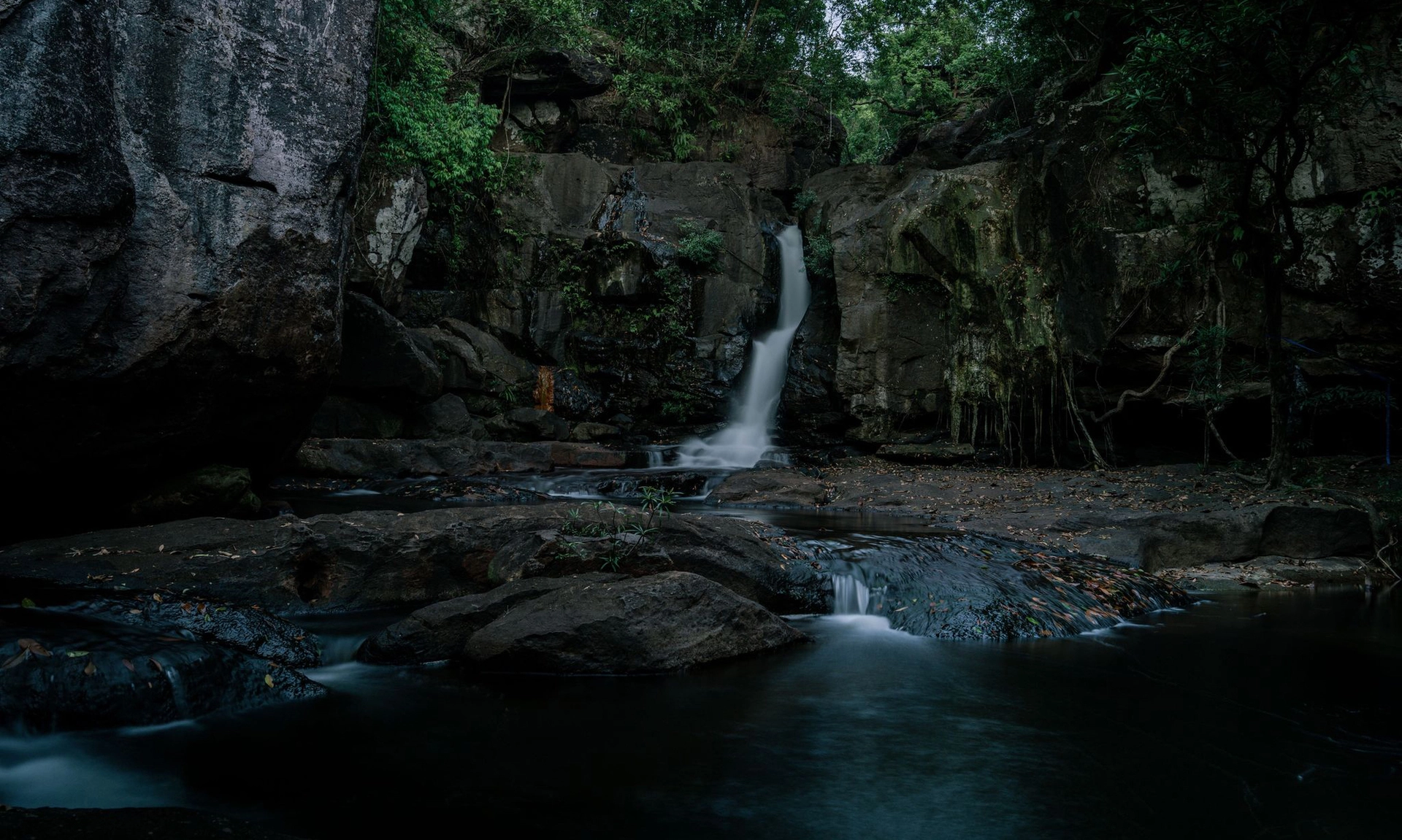
Visitors are also reminded not to litter indiscriminately, not to arbitrarily touch animals and plants in the forest, not to cut down or take anything out of the forest. Mr. Tan's tour guides all carried bags and picked up all the garbage on the trekk bow.
"Looking at the images of these green trees, I can't think that this is a forest in Phu Quoc," Mr. Tan said because he used to assume that Phu Quoc forest was "poor". If you are familiar with the blue of Phu Quoc sea, Mr. Tan suggested that visitors should come to admire the blue of the forest to have interesting experiences.
Image: Nguyen Anh Tien
According to VnE
